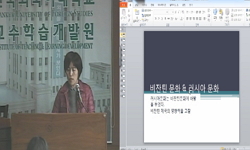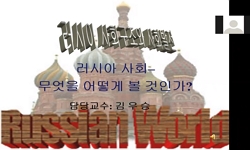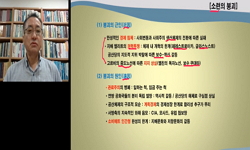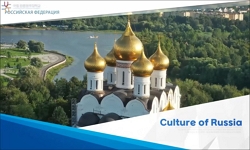This study is to analyze the beginning and the end of Inner Mongolia integration movement of Bogd`s government developed after the declaration of independence in 1911. In 1911, the leading members of the declaration of independence set integration of ...
http://chineseinput.net/에서 pinyin(병음)방식으로 중국어를 변환할 수 있습니다.
변환된 중국어를 복사하여 사용하시면 됩니다.
- 中文 을 입력하시려면 zhongwen을 입력하시고 space를누르시면됩니다.
- 北京 을 입력하시려면 beijing을 입력하시고 space를 누르시면 됩니다.

1912-1913년 복드 정부의 내몽골 통합 시도와 좌절 = Attempt to Integrate Inner Mongolia and Frustration of Bogd`s Government in 1912-1913
한글로보기https://www.riss.kr/link?id=A86946765
- 저자
- 발행기관
- 학술지명
- 권호사항
-
발행연도
2009
-
작성언어
Korean
-
주제어
내몽골 통합 운동 ; 복드 정부 ; 할하 ; 내몽골 왕공 ; 청조 ; 러시아 ; 중화민국 ; Inner Mongolia integration movement ; Bogd`s government ; Khalkh ; Inner Mongolian princes ; Qing dynasty ; Russia ; Republic of China
-
KDC
916
-
등재정보
KCI등재
-
자료형태
학술저널
- 발행기관 URL
-
수록면
55-84(30쪽)
-
KCI 피인용횟수
5
- DOI식별코드
- 제공처
- 소장기관
-
0
상세조회 -
0
다운로드
부가정보
다국어 초록 (Multilingual Abstract)
This study is to analyze the beginning and the end of Inner Mongolia integration movement of Bogd`s government developed after the declaration of independence in 1911. In 1911, the leading members of the declaration of independence set integration of Mongols as a dominant goal of independence from the stage of planning and plotting it. Therefore, for Bogd`s government, the most important assignment after the declaration of independence was to integrate the whole Mongolians under the control of the Qing dynasty including Inner Mongolia and to be recognized as an independent country by foreign countries including the Qing dynasty (which later became the Republic of China). To achieve these, by August of 1911, Bogd`s government unified the whole area of West Mongolia such as Uliastai and Khovd by force, and then tried to unite the whole Inner Mongolia through various ways like encouraging people to return voluntarily, negotiating with Russia through diplomatic channels, dispatching an army, and so on. As a result, Inner Mongolia integration movement of Bogd`s government was failed. This historical event, however, deeply affected the development in the later history of Mongol over the failure itself. With the final and last attempt to integrate by force, the national integration movement of Bogd`s government was actually finished, which made Khalkh and Inner Mongolia take their own courses as two different countries. The reason Bogd`s government could not succeed in national unification was, of course, objection of the Republic of China and Russia. Bogd`s government was too weak to keep Khalkh independent, so it was impossible to unify Inner Mongolia as the two big countries are against it. However, it also is not the accurate judge of the situation at that time to blame only foreign countries for everything about the failure on national integration. There is lack of persuasion and it is hard to agree because this is excluding the role of Mongolians in the history of Mongol. The Mongolians cannot be freed from their responsibility for the failure on national unification though it must be difficult for them to improve their own destiny in the complicated situation that Russia and Japan were struggling and the Republic of China was claiming the suzerainty on them. In regard of this, we need to keep it in mind that Inner Mongolian princes did try not to disconnect the relationship with China. On the contrary, the commons positively supported the independence of Khalkh. This tells us that princes of Inner Mongolia should be blamed for the failure on unification in many aspects. In fact, some of princes refused to join Bogd`s government in the first place, while some others finally turned to the side of the Republic of China after all the hesitation of choosing between Bogd`s government and China. That is because of the political and economical interests started from the Qing dynasty era. Also, the reluctance against the independence led by Khalkh was the big reason for princes of Inner Mongolia to refuse to unite Bogd`s government. In this point of view, so-called `divide and rule policy`(分而治之) of the Qing Dynasty can be regarded as quite success. Then, the gap in recognition of the opponent that lied between the two would be another reason which cannot be ignored for the failure of Inner Mongolia integration. As a result of this, `Mongolian nationalism` which could join Mongol together was difficult to rise. In case of Khalkh, they could keep some of the regional integration, while Inner Mongolia couldn`t unite internally because it was neighboring inland of China or the Qing Dynasty kept interfering. Actually, that the nationalism couldn`t rise up was the reason why the struggle against cultivating the pastures developed in various places of Inner Mongolia around the 20th century couldn`t be unified as an integrated force. I think this is the another reason for princes of Inner Mongolia couldn`t willingly agree the independence led by Khalkh.
참고문헌 (Reference)
1 白拉都格其, "勒旺諾爾布1911年外蒙古“獨立”的態度" 中央民族大學出版社 2007
2 汪炳明, "關於民國初年表示歸順外蒙古哲布尊丹巴政府的蒙古盟旗王公" 1996
3 白拉都格其, "辛亥革命與貢桑諾爾布" 3 : 2002
4 裵京漢, "辛亥革命 직후 몽골독립에 대한 孫文과 革命派의 대응」-民族主義와 中華主義의 갈등" 성균관대학교 인문과학연구소 30 : 2000
5 西蒙王公招待所, "西蒙會議始末記" 遠方出版社 2007
6 白拉都格其, "袁世凱治蒙政策芻議" 哲學社會科學版 29 : 2002
7 貴志俊彦, "袁世凱政權の內モンゴル地域支配體制の形成-<蒙藏院>の成立と內モンゴル三特別行政區の設置" 185 : 1989
8 孫宏年, "蒙藏事務局與民國初年的邊疆治理論析" 14 (14): 2004
9 コロストヴィェッツ, "蒙古近世史" 森北書店 1943
10 白拉都格其, "蒙古族通史(上)" 內蒙古大學出版社 2002
1 白拉都格其, "勒旺諾爾布1911年外蒙古“獨立”的態度" 中央民族大學出版社 2007
2 汪炳明, "關於民國初年表示歸順外蒙古哲布尊丹巴政府的蒙古盟旗王公" 1996
3 白拉都格其, "辛亥革命與貢桑諾爾布" 3 : 2002
4 裵京漢, "辛亥革命 직후 몽골독립에 대한 孫文과 革命派의 대응」-民族主義와 中華主義의 갈등" 성균관대학교 인문과학연구소 30 : 2000
5 西蒙王公招待所, "西蒙會議始末記" 遠方出版社 2007
6 白拉都格其, "袁世凱治蒙政策芻議" 哲學社會科學版 29 : 2002
7 貴志俊彦, "袁世凱政權の內モンゴル地域支配體制の形成-<蒙藏院>の成立と內モンゴル三特別行政區の設置" 185 : 1989
8 孫宏年, "蒙藏事務局與民國初年的邊疆治理論析" 14 (14): 2004
9 コロストヴィェッツ, "蒙古近世史" 森北書店 1943
10 白拉都格其, "蒙古族通史(上)" 內蒙古大學出版社 2002
11 "盛京時報"
12 汪炳明, "淸朝覆亡之際駐京蒙古王公的政治活動" 內蒙古人民出版社 1987
13 田志和, "民國初年蒙旗 “獨立” 事件" 內蒙古人民出版社 1991
14 忒莫勒, "民國元年昭烏達盟扎魯特左旗事變硏究" 4 : 1995
15 "政府公報"
16 張啓雄, "外蒙主權歸屬交涉 1911-1916" 中央硏究員近代史硏究所 1995
17 "外交部當" 中央硏究員近代史硏究所
18 格日勒, "北洋軍閥政府與西盟王公會議" 內蒙古人民出版社 1991
19 王德勝, "北洋軍閥對蒙政策幾個問題的初析" 內蒙古人民出版社 3 : 1987
20 藍美華, "內蒙古與1911年蒙古獨立運動" 23 (23): 2005
21 陳春華, "俄國外交文書選譯關于蒙古問題" 黑龍江敎育出版社 1991
22 橘誠, "モンゴルの獨立と領域問題」-露蒙協定の分析を中心に" 52 : 2006
23 中見立夫, "モンゴルの獨立と國際關係" 東京大出版會 1994
24 ウルゲダイ, "ボグドㆍハン政府軍の一九一三年の內モンゴルへの軍事行動についての考察" 7 : 2003
25 橘誠, "ボグド=ハン政權の第二次遣露使節と帝政ロシア" 154 : 2006
26 中見立夫, "ボグド=ハン政權の對日交涉努力と帝國主義列强" 17 : 1979
27 中見立夫, "ハイサンとオタイ" 東洋學報 1976
28 中見立夫, "グンサンノロブと內モンゴルの運命」. 內陸アジアㆍ西アジアの社會と文化" 山川出版社 1983
29 橘誠, "グドㆍハン政權の內モンゴル統合の試み」-シリーンゴル盟を事例として-" 87 (87): 2005
30 Navaannamjil, G., "Övgön bicheechiin ügüülel" Ulsyn khevleliin gazar 1956
31 "ony ündesnii erkh chölöö tusgaar togtnolyn tölöö temchel, Barimt bichig emkhetgel 1900~1914" Ulsyn khevleliin gazar 1982
32 Shirendev, B., "V. Kotvichiin khuviin arkhivaas oldson mongolyn tüükhend hkolbogdokh zarim bichig" Shinjlekh ukhaany akademiin khevlel 1972
33 Lonjid, Z., "Tüsheet khan aimgiin ikh tüshiguulyn khoshuu: Yalguun baatar Lamvaryn Sum'ya" UB 1994
34 Hyer, Paul., "The Role of Inner Mongolia in the independence movemment" West Washington University 1979
35 Lattimore, Owen, "The Mongols of Manchuria" The John Day Compay 1934
36 Mei-hua Lan, "The Mongolian independence movement of 1911: A Pan-Mongolian endeavor" Harvard University 1996
37 Bawden, C.R., "The Modern history of Mongolia" Kegan Paul International 1989
38 AVPRI, "Sbornik dogovorov i drugikh dokumenrov, po istorii mejdunarodnykh otnoshenii na dal'nem vostoke(1842-1925)." Izdanie instituta vostokovedeniia 1927
39 Belov, E.A., "Rossiia i Mongoliia(1911-1919 gg" IV RAN 1999
40 Batsaikhan, O., "Mongolyn tusgaar togtnol ba khyatad, oros, mongol gurvan ulsyn 1915ony khiagtyn geree 1911-1916" Mongol ulsyn shinjlekh ukhaany akademi, Tüükhiin khüreelen/Olon ulsyn sudlalyn khüreelen 2002
41 Khamsüren, B., "Mongolyn gadaad orchin töriin tusgaar togtnol" UB 1998
42 Puntsagnorov, Ts., "Mongolyn avtonomit üeiin tüükh" Ulsyn khevlel ba khevleliin üildverleliig erkhlekh gazar 1955
43 Ochir, A., "Mongolyn ard tümnii" 1911
44 Jamsran, L., "Mongolchuudyn sergen mandaltyn ekhen" Soyombo khevleliin Gazar 1992
45 Boldbaatar, J., "Mongol ulsyn tüükh,Tav dugaar bot''" Mongol ulsyn shinjlekh ukhaany akademi, Tüükhiin khüreelen 2002
46 Magsarjav, N., "Mongol ulsyn shine tüükh(Mongoloos kirill bichigt buulgasan O. Batsaikhan/Z. Lonjid, UB: Mongol ulsyn shinjlekh ukhaany akademi, Tüükhiin khüreelen/Mongol ulsyn zasgiin gazryn Arkhiv" Mongol Ulsyn Ündesnii Töv Arkhiv 1994
47 Tsogt-Ochir, D., "Khelmegdsen egüzer khutagt J. Galsandash" UB 1992
48 Akim, O., "Egüzer khutagt Galsandash" Egüütgegdsen zayaa 2002
49 Jamsran, L., "Dar'gangyn süreg khoshuu" UB 1994
50 Natsagdorj, Sh., "Damdinsüren the Forefront Hero in : Mongolian heros of twentieth century" AMS Press 1976
51 Mei-hua Lan, "China's New administration in Mongolia in : Mongolia twentieth entury: landlocked cosmopolitan" M.E. Sharpe 1999
52 Belov, E.A., "Barginskii bopros po materialam russkikh arkhivov(1911-1915)" 1993
53 Onon, Urgunge, "Asia's first modern revolution" 1989
54 F. Kitaiskii stol, "AVPRI(Arkhiv vneshnei politiki Rossiskoi imperii)"
55 Hyer, Paul, "A Mongolian living buddha, Biography of the Kanjurwa khutughtu" State University of New York Press 1983
56 이평래, "1911년 몽골 독립과 민족 통합 운동의 초기 과정" 동양사학회 (104) : 155-190, 2008
57 ジュリゲン, "1911年のボグドㆍハン政權に歸順した內モンゴル旗數の再檢討" 19 : 2001
동일학술지(권/호) 다른 논문
-
- 중앙아시아학회
- 최영순 ( Young Soon Choi )
- 2009
- KCI등재
-
거용관(居庸關) 건탑공덕기(建塔功德記)의 팍바 몽골어 각문(刻文) 주석(註釋)
- 중앙아시아학회
- 최형원 ( Hyong Won Choi )
- 2009
- KCI등재
-
- 중앙아시아학회
- 이주형 ( Ju Hyung Rhi )
- 2009
- KCI등재
-
요대(遼代) 팔대영탑(八大靈塔) 도상(圖像)의 연구(硏究)
- 중앙아시아학회
- 주경미 ( Kyeong Mi Joo )
- 2009
- KCI등재
분석정보
인용정보 인용지수 설명보기
학술지 이력
| 연월일 | 이력구분 | 이력상세 | 등재구분 |
|---|---|---|---|
| 2028 | 평가예정 | 재인증평가 신청대상 (재인증) | |
| 2022-01-01 | 평가 | 등재학술지 유지 (재인증) |  |
| 2019-01-01 | 평가 | 등재학술지 유지 (계속평가) |  |
| 2016-01-01 | 평가 | 등재학술지 선정 (계속평가) |  |
| 2015-12-01 | 평가 | 등재후보로 하락 (기타) |  |
| 2011-01-01 | 평가 | 등재 1차 FAIL (등재유지) |  |
| 2009-01-01 | 평가 | 등재학술지 유지 (등재유지) |  |
| 2006-01-01 | 평가 | 등재학술지 선정 (등재후보2차) |  |
| 2005-01-01 | 평가 | 등재후보 1차 PASS (등재후보1차) |  |
| 2003-07-01 | 평가 | 등재후보학술지 선정 (신규평가) |  |
학술지 인용정보
| 기준연도 | WOS-KCI 통합IF(2년) | KCIF(2년) | KCIF(3년) |
|---|---|---|---|
| 2016 | 0.62 | 0.62 | 0.67 |
| KCIF(4년) | KCIF(5년) | 중심성지수(3년) | 즉시성지수 |
| 0.63 | 0.55 | 0.793 | 0.08 |




 KCI
KCI KISS
KISS







